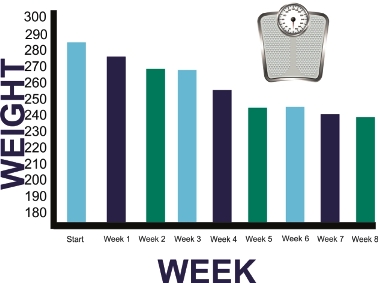Welcome to “The Ultimate Guide to Starting a Keto Diet Plan: Step-by-Step.” If you’re looking to embark on a ketogenic diet journey, this comprehensive guide aims to provide you with all the essential knowledge and practical steps you need to get started successfully. The keto diet, short for the ketogenic diet, is a low-carb, high-fat eating plan that has gained immense popularity due to its potential health benefits and effective weight loss results. In this article, we will explore the fundamental principles of the keto diet, its science, and guide you through a step-by-step process to help you embrace this lifestyle and achieve your health and weight goals. Get ready to transform your eating habits and discover the power of ketosis!
1. Introduction to the Keto Diet: Understanding the Basics
What is the Keto Diet?
The Keto Diet, short for Ketogenic Diet, is a low-carb, high-fat eating plan that has gained popularity for its potential health benefits and weight loss effects. On this diet, you drastically reduce your carbohydrate intake while increasing your consumption of healthy fats, which forces your body to enter a metabolic state called ketosis.
The Science Behind Ketosis
Ketosis is a natural metabolic process where your body switches from using glucose (sugar) for energy to burning fat for fuel. By limiting carbohydrates, your body’s primary source of energy, and increasing fat consumption, you force your body to turn to stored fat for fuel instead. This not only helps with weight loss but may also improve energy levels and mental clarity.
2. Step 1: Setting Your Goals and Motivation for Starting a Keto Diet
Identifying Your Health and Weight Loss Goals
Before diving into the Keto Diet, it’s important to identify your specific health and weight loss goals. Whether you’re aiming to lose a few pounds, improve your overall well-being, or manage specific health conditions, understanding your goals will help you stay motivated and focused throughout your keto journey.
Finding Motivation and Commitment
Starting a new diet plan can be challenging, so finding your motivation and commitment is crucial. Maybe you want to feel more confident in your favorite pair of jeans or improve your overall health. Whatever your reason, remind yourself of your goals regularly and surround yourself with positive support to keep your motivation levels high.
3. Step 2: Preparing Your Kitchen for a Keto Lifestyle
Removing Temptations: Cleaning Out Your Pantry
To set yourself up for keto success, it’s important to rid your pantry of tempting high-carb foods. Clear out the cookies, chips, and sugary snacks that might tempt you to stray from your new eating plan. This will make room for healthier options and make it easier to stick to your keto lifestyle.
Stocking Up: Essential Keto-Friendly Foods and Ingredients
Once you’ve cleaned out the pantry, it’s time to stock up on keto-friendly foods. Load your kitchen with healthy fats like avocados, nuts, and olive oil. Include low-carb vegetables like spinach, broccoli, and cauliflower. Don’t forget about good sources of protein like eggs, fish, and poultry. Having these keto-approved foods on hand will make meal preparation a breeze.
4. Step 3: Creating a Keto Meal Plan: What to Eat and What to Avoid
Understanding Macronutrients: Balancing Fat, Protein, and Carbohydrates
A key aspect of the keto diet is understanding and balancing macronutrients – fat, protein, and carbohydrates. On keto, you should aim for a high fat intake (roughly 70-75% of your daily calories), moderate protein consumption (around 20-25%), and significantly restrict carbohydrates (only about 5-10% of your daily calories). By following this macronutrient breakdown, you can effectively reach and maintain ketosis.
Meal Planning Strategies and Sample Meal Plans
Meal planning is a game-changer when it comes to sticking to a keto diet. By planning your meals and snacks in advance, you’ll avoid decision stress and be less tempted to reach for those carb-loaded convenience foods. Consider batch cooking, preparing simple meals, and experimenting with new keto recipes to keep your taste buds excited. You can find plenty of sample meal plans online to get you started, but don’t be afraid to customize them to fit your preferences and nutritional needs.
Starting a keto diet plan can be both exciting and challenging, but with the right information and a bit of preparation, you’re setting yourself up for keto success. So, set your goals, clean out your pantry, stock up on keto-friendly foods, and start planning your delicious and nutritious keto meals. Cheers to your new keto adventure!
5. Step 4: Incorporating Exercise into Your Keto Diet Plan
The Role of Exercise in Achieving Ketosis
Exercise isn’t just for building muscles and boosting your mood, it can also play a crucial role in helping you achieve ketosis. When you exercise, your body burns through stored glycogen, which is essentially glucose stored in your muscles and liver. By depleting this glycogen, your body is forced to turn to fat as its primary fuel source, leading to accelerated ketosis.
Choosing the Right Types of Exercise for Your Keto Journey
When it comes to choosing the right types of exercise for your keto journey, there’s no one-size-fits-all answer. The key is finding activities that you enjoy and that align with your fitness level. Whether it’s going for a brisk walk, hitting the gym for some weightlifting, or trying out a high-intensity interval training (HIIT) workout, the goal is to find exercises that get your heart rate up and challenge your muscles. Remember, consistency is key, so aim to incorporate exercise into your keto diet plan on a regular basis.
6. Step 5: Managing Keto Flu and Common Challenges
Understanding Keto Flu and How to Alleviate Its Symptoms
While embarking on your keto journey, you may experience what’s commonly known as the “keto flu.” Symptoms can include fatigue, headache, irritability, and brain fog. But fear not, this is just a temporary phase as your body adjusts to the new way of fueling itself. To alleviate these symptoms, make sure you stay well-hydrated, increase your electrolyte intake, and give yourself time to adapt. It’s also helpful to focus on nutrient-dense foods and consume adequate amounts of healthy fats.
Tackling Common Challenges: Dining Out, Social Events, and Traveling
Navigating social situations and sticking to your keto diet plan can be a challenge, but it’s not impossible. When dining out, opt for protein-rich dishes like grilled chicken or fish, and ask for extra vegetables instead of starchy sides. At social events, bring your own keto-friendly snacks or focus on the protein and vegetable options available. When traveling, plan ahead by packing keto-friendly snacks and researching keto-friendly restaurants near your destination. Remember, flexibility and preparation are key to staying on track.
7. Step 6: Tracking Your Progress and Adjusting Your Keto Diet Plan
The Importance of Tracking: Measuring Ketone Levels and Weight Loss
Tracking your progress is crucial in understanding how your body is responding to the keto diet plan. Measuring ketone levels using ketone testing strips or a blood ketone meter can help you determine if you’re in ketosis. Additionally, keeping track of your weight loss can be a great motivator and allow you to make adjustments as needed. Remember, everyone’s body is different, so what works for someone else may not work for you.
Adjusting Your Keto Diet Plan for Optimal Results
As you progress on your keto journey, you may need to make adjustments to your diet plan to ensure optimal results. This could involve tweaking your macronutrient ratios, experimenting with different foods, or incorporating intermittent fasting. Pay attention to how your body feels and be open to making adaptations along the way. Remember, the goal is to find a sustainable and enjoyable way of eating that supports your health and well-being.
8. Conclusion: Sustaining a Healthy Keto Lifestyle for Long-Term Success
Starting a keto diet plan can be an exciting and transformative journey. By following these steps, you’ll be well-equipped to embark on your keto adventure and achieve your health and wellness goals. Remember to be patient with yourself, listen to your body, and allow room for flexibility. A healthy keto lifestyle is not just about short-term success but also about finding a long-term approach that supports your overall well-being. So, get ready to embrace the delicious world of healthy fats and embark on your keto adventure with confidence!
8. Conclusion: Sustaining a Healthy Keto Lifestyle for Long-Term Success
Congratulations on completing “The Ultimate Guide to Starting a Keto Diet Plan: Step-by-Step!” Armed with the knowledge and tools provided in this guide, you are well-equipped to embark on your keto journey and enjoy the potential benefits it offers. Remember, sustaining a healthy keto lifestyle requires consistency, patience, and listening to your body’s needs. By setting realistic goals, adapting your meal plans, incorporating exercise, and staying motivated, you can achieve long-term success with the keto diet. Embrace this newfound lifestyle, prioritize your well-being, and enjoy the many rewards of a healthy, ketogenic way of eating. Here’s to your continued success on your keto adventure!
FAQ
1. Can anyone start a keto diet?
While the keto diet can be beneficial for many individuals, it may not be suitable for everyone. It is always recommended to consult with a healthcare professional or registered dietitian before starting any new diet plan, especially if you have any pre-existing medical conditions or are taking medications.
2. What are some common challenges people face when starting a keto diet?
Transitioning to a keto diet can come with its own set of challenges. Some common ones include experiencing keto flu symptoms in the initial phase, adjusting to a new way of eating, and navigating social situations where high-carb foods are prevalent. However, with proper preparation, support, and knowledge, these challenges can be overcome.
3. Is it necessary to track macronutrients on a keto diet?
Tracking macronutrients, specifically fat, protein, and carbohydrates, is an integral part of a keto diet. It helps ensure that you are consuming the right balance of nutrients to achieve and maintain a state of ketosis. Tracking can be done through various apps, websites, or food diaries to help you stay on track with your goals.
4. Can I exercise while on a keto diet?
Absolutely! Exercise can be a beneficial addition to your keto diet plan. However, it is important to understand the right types of exercises that can support your goals and energy levels while on a low-carb diet. It is recommended to consult with a fitness professional to design an exercise routine that complements your keto lifestyle.
Top 3 Authoritative Reference Publications
1. Healthline
2. Mayo Clinic
3. Harvard Health Publishing

Get your custom keto meal plan
What’s your main health goal?

